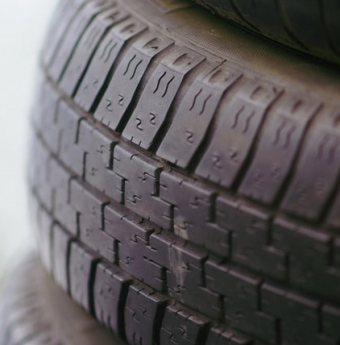Safe Driving: How to Properly Check Your Tire Pressure
/ 5 Stars read 3 min

One of the crucial components of your vehicle is your tires, as this provides the only connection you have with the road when driving your car.
Tires are designed to have good handling, a safe ride, and have a good fuel economy, as long as you maintain the proper air inflation pressure.
Improper tire pressure may cause premature wear to your tires. Improperly inflated tires may become a safety hazard, as some modern safety features such as Stability Control and ABS may not work optimally.
You should know how and when to check your tire pressure, as this is an invaluable skill every motorist should have.
Preparations: Before You Start
The first information you should arm yourself with is the correct inflation pressures for the tires fitted to your vehicle.
The tire’s proper inflation pressure information of your car is on the driver-side door jamb sticker. This sticker displays the tire specifications, vehicle weight restriction, and recommended tire pressures for the front and rear tires.
You can also find this information in your vehicle’s owner’s manual for checking.
A common mistake people make is checking the sidewall markings of the tires mounted on your car. This value should not be relied on as it displays the maximum tire pressure designed for the tire, not the recommended pressure suitable for your vehicle.
Another preparation is the means of checking the tire pressure. Unless you have a flat tire (usually visible), it is hard to determine tire pressure by mere visual inspection. A tool called a tire pressure gauge gets the correct readings from your tire. The readout is usually in Pounds per Square Inch (PSI). Other calibrations are available. Various tire pressure gauges are available in the market but are one of three types: Digital, Dial, and internal slide gauges. These come in prices and features that would suit your taste.
Checking Your Tire Pressure
You get accurate readings when checking tire pressures first thing in the morning when the tires are still cold, or 3 to 4 hours after you park your vehicle in a cool, shaded place.
Temperature plays a crucial role when obtaining accurate tire pressure, as air expands when it is hot, and tires absorb heat as they are usually black. Also, ensure the vehicle is on a firm, level surface.
Checking your tire pressure would require the following steps:
- Get your tire pressure gauge handy. Ensure it is in good condition. Get a note and a pen to record your readings.
- Get to one tire, remove the air valve stem cap, and keep it safe.
- Press the tire gauge against the exposed valve stem for a few seconds (not more than 5). Hearing a momentary hiss of air when the tire gauge is engaged is normal.
- Read the air pressure gauge and record value and tire location.
- Compare this value with recommended tire pressure and location (front or rear)
- If the tire is overinflated, release air in a short burst by pressing against the valve stem(but not enclosing it) and re-measure until air pressure is within specifications.
- If the tire is under-inflated, use a portable tire compressor (if available) to fill and recheck or drive to a tire shop to fill up to the recommended pressure( after checking the other three tires)
- Replace the tire valve stem cap
- Repeat processes 1 to 7 for other tires, including the spare tire.
When To Check Your Tire Pressure
You can make it a habit of checking your tire pressures once a month or after the vehicle has been parked for a long time (over a month). Also, check if you ever run over a sharp object or hit a curb.
Modern vehicles have Tire Pressure Monitoring systems(TPMS) which assist in validating the tire pressures, with warning lights illuminating if the pressure falls below a threshold.
Taking care of your tires and checking tire pressures from time to time is good to guarantee safe and dependable vehicle performance.



